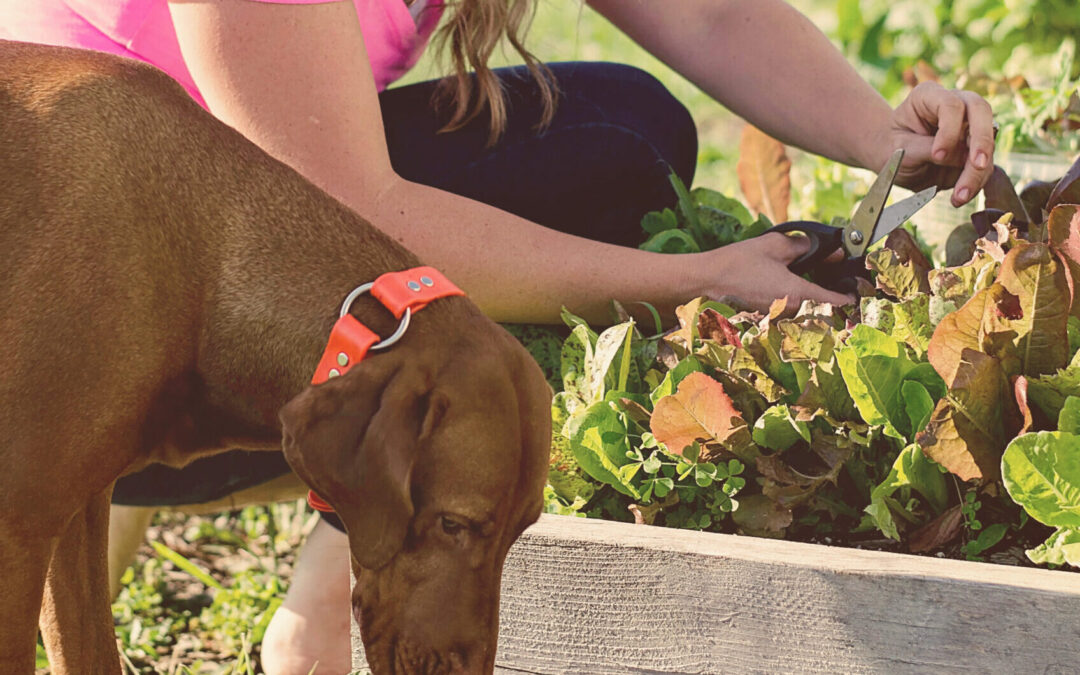
Creating Easy Essential Oil Tick Repellent for Dogs
If you live in North America, you know how important it is to address tick-borne diseases for our pets, our families and ourselves. With all of the commercial and toxic ways to control and prevent tick bites on both our two and four-legged family members, this article looks at the data around efficacy, how to apply it, which oils to use and a recipe to create repellent and have it ready.
Proven efficacy – Essential oil tick repellent for dogs
Unlike DEET-based repellents, Therapeutic grade essential oils like Young Living are not Toxic to our dog friends. Also, they will not melt plastic raincoats or tent materials when applied directly, so are a better option for camping and hiking gear. If your dog is going to be wet because of weather or tall grass, you may need to reapply more frequently, so be sure to pack it along.
How to apply essential oils to your dog
The application of essential oils is pretty straightforward. Remember to test in a small area first to be sure your dog is comfortable with the smell and can move away from you if needed. Some canines have sensitive skin, so I do recommend test patching first before using all over the legs and belly. Spray Bottle application, Apply straight oils to your own hands and rub over your dog’s hair, or I also love to add several drops on my dog’s leather or absorbent collar. When mixing, always dilute with a carrier oil or witch hazel for easier application and coverage. You can store the mix in a small spray bottle to keep it handy or attach a ring or carabiner to keep it with you while you are hiking.
Which oils to select for tick repellants
Eucalyptus (Globulus, Lemon Myrtle, Myrtle, Australian Euricifolia)
Aside from smelling amazing, this oil is best paired with citronella essential oil for pets. Always dilute with a carrier oil such as grapeseed first before applying to your dog.
Kunzea
Lovingly called the tick bush from those native to New Zealand & Australia. I love including this oil to repel ticks and bug repellents.
Lavender
Lavender is safe to use on infants as well as dogs and cats and has proven to be effective in preventing tick eggs from hatching. Dilute it with a carrier oil and use it directly on your skin, clothing and gear.
Lemongrass
This essential oil has long been considered to have natural tick repellent properties and is popular in skin and hair products. Be sure to dilute lemongrass oil in a carrier before applying. It can be a spicier oil for some.
Lemon
Great for a pet bed refresher or on carpets! Lemon is not recommended to use directly on your dog or cat as it can be photo-sensitive. To use lemon oil, dilute in a spray bottle.
Cedarwood
Another oil that is toxic to ticks, Cedarwood makes a great addition to a repellant. Cedarwood’s powerful natural components deal out “death by dehydration, neutralization of bodily fluids, encapsulation and/or emulsification of bodily fats, prevention of breathing, pheromonal interference that interrupts processes necessary to metabolism, movement, reproduction and feeding, and dissolving insect larvae,” according to Marian Grande. It’s a clear winner in the battle against ticks.
Please do not apply oils directly to an imbedded tick, as it can cause them to release their venom into the animal. Remove the tick and then treat the wound. I like using Thieves and Frankincense for this situation.
Create your own easy tick repellant
To start experimenting with preventing the ticks in your surrounding area, I recommend starting with this mix.
Ingredients:
- 1 cup of water or witch hazel or aloe juice
- 2 tsp carrier oil – V6, olive, or fractionated coconut oil
- 10 drops geranium essential oil
- 5 drops cedarwood essential oil
- 3 drops lavender essential oil
- 3 drops lemongrass essential oil
Directions:
1. Fill your spray bottle with 1 cup of water. If you are using a smaller bottle, just cut your amounts in half.
2. Add the essential oils, put the top on the bottle and shake.
Have user questions or want to order your tick repellant oils today? Contact Mollie!
ABOUT MOLLIE VACCO

Certified health coach, with a focus on natural wellness and holistic modalities
Mom of three boys & wife
Licensed Parelli Instructor & horsewoman



